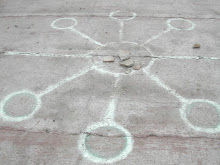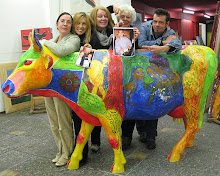Two meanings of "unity of consciousness" in relation to quantum mechanics.
The term "unity of consciousness" may be used for (1) the inner experience that we all have, of being one single entity, one person, one "I". But it may also be used for (2) the idea that all consciousness of all beings is in reality one and the same consciousness, one "World-soul". In order to explain the "unity of consciousness" in its first meaning (1) in scientific terms, we have to search in our understanding of nature for a unifying principle that is so tight that it binds parts of a system into a real unity. The Quantum Mechanical (QM) entanglement principle joins parts of a system together in such a way that a change in one part of the system directly effects the other parts, without transmission of signals, particles, waves or whatever. If this QM entanglement principle is responsible for the "unity of consciousness", it means that the signal processing in (the brain of) the organism must be able to work toward a single complex entangled wave function, the reduction of which is identical to all the experiencing and choosing that the "I" does at that moment. ("I" or "I-ness" is that which experiences in an organism.) Just before its reduction this wave function contains in a vast QM superposition all the different possibilities of perception and choice that the "I" has at that moment. This gives a model of reality in which causality is back in quantum mechanics, in which there is free will and in which there is transfer of (experiential) information to the "I" ("I-ness") and transfer of causes from it, all without energy transfer! Quantum mechanical entanglement then binds the separate parts of the total of experiences and causes together to one complete phenomenal perspective of experiences and causes.
But how then about the second "unity of consciousness" (2) in the meaning of one "World-soul"? Could that unity also originate from a big all-encompassing entangled wave function? And do we need another principle or concept to account for the sense of separation that we feel with respect to other beings, instead of experiencing and acting in the awareness that all consciousness in reality is this one "World-soul"? The so-called Heisenberg picture of QM shows a strong resemblance with this view: the fixed state vector (corresponding to the unchanging "World-soul" or central "I-ness") is seen by "the illusion" (the "veils") of the variable operators. These operators represent observables as well as "actables/choosables". The total of measured quantities is then the grand total of all experiences and choices of all beings through which the "World-soul" experiences and chooses. In the depth of the entanglement between the different beings there may be effects of the unity of their "consciousnesses", for instance: in this picture the joint origin of all beings reflects itself in the creation of entanglements that have to do with the deep unity-feeling that we can have with fellow-beings. I would like to discuss the above issues with the audience.
Gerard, 15 november 2007
Dit 'Abstract' voor een presentatie heb ik ingestuurd voor de conferentie 'Toward a Science of Consciousness 2008' die volgend jaar in april in Tucson Arizona gehouden zal worden. Ik dacht dat (sommigen van) jullie het misschien leuk zouden vinden om dit te lezen. Het is de eerste keer dat ik op een dergelijke conferentie zo expliciet het idee van een grote eenheid van bewustzijn naar voren ga brengen. (De inspiratie van kunstenaars (m.n. in WitterdanWit en Arps&Co) heeft bijgedragen tot deze doorbraak.)
Pics van de opening
inloggen wereldwijd
Big Hug in La Paz
download het programma www.oovoo.com , steek een webcam in je camera en meld je aan bij rob@expressive.nl . En je zit om 22.30 live in de big hug.
Zorg dat je mensen om je heen hebt om te knuffelen.
De volgende steden doen mee La Paz, Madrid, Amsterdam, Nijmegen, Keulen, Rome, Jerusalem, een klein dorpje in India, en Hiroshima.
Iedereen die niet de connectie kan maken die moet gewoon mee huggen en een foto maken en op een link insturen.
download het programma www.oovoo.com , steek een webcam in je camera en meld je aan bij rob@expressive.nl . En je zit om 22.30 live in de big hug.
Zorg dat je mensen om je heen hebt om te knuffelen.
De volgende steden doen mee La Paz, Madrid, Amsterdam, Nijmegen, Keulen, Rome, Jerusalem, een klein dorpje in India, en Hiroshima.
Iedereen die niet de connectie kan maken die moet gewoon mee huggen en een foto maken en op een link insturen.
'open source' art project with 15 artists 5 scientists, performance,workshops
link naar ALGEMEEN persbericht
link naar Inhoudelijk EXPOSITIE
link naar Performances Rik Spann
link naar Masterclasses fotografie
link naar Dagelijkse interactieve onderdelen
link naar De stellingen van de exposanten
link naar Voorwoord Ella Arps
Programma links:
zondag 09.03 debat
maandag 10 .03 fotografie en filosofen café
dinsdag 11 .03 meditatie technieken
woensdag 12.03 Life Art Books & QTango
donderdag 13.03Kids overdag no-age rock avond
thursday 13.03 late night cult film The Altered State
vrijdag 14.03 Quantum Night
Column door Ing Gerrit Teule De schrijver van deze column, Gerrit Teule, schreef ook het boek "Spetters uit de Oerknal" waarin hij de bewustzijnshypothese van Jean Charon uiteenzet. Ook vertaalde hij het boek "Op de grens van Geest en Stof", van de kernfysicus Lawrence Fagg, beide verkrijgbaar in de boekhandel of http://www.bol.com/. http://www.elektromagnetischekracht.nl/
link to ....Full Programm in English
link to ...Through space and time for Peace
link to.... Meditation programm on Tuesday 11th
link naar Inhoudelijk EXPOSITIE
link naar Performances Rik Spann
link naar Masterclasses fotografie
link naar Dagelijkse interactieve onderdelen
link naar De stellingen van de exposanten
link naar Voorwoord Ella Arps
Programma links:
zondag 09.03 debat
maandag 10 .03 fotografie en filosofen café
dinsdag 11 .03 meditatie technieken
woensdag 12.03 Life Art Books & QTango
donderdag 13.03Kids overdag no-age rock avond
thursday 13.03 late night cult film The Altered State
vrijdag 14.03 Quantum Night
Column door Ing Gerrit Teule De schrijver van deze column, Gerrit Teule, schreef ook het boek "Spetters uit de Oerknal" waarin hij de bewustzijnshypothese van Jean Charon uiteenzet. Ook vertaalde hij het boek "Op de grens van Geest en Stof", van de kernfysicus Lawrence Fagg, beide verkrijgbaar in de boekhandel of http://www.bol.com/. http://www.elektromagnetischekracht.nl/
link to ....Full Programm in English
link to ...Through space and time for Peace
link to.... Meditation programm on Tuesday 11th
Abonneren op:
Reacties posten (Atom)
"Unity of consciousness " & quantum mechancis
Two meanings of "unity of consciousness" in relation to quantum mechanics.The term "unity of consciousness" may be used for (1) the inner experience that we all have, of being one single entity, one person, one "I". But it may also be used for (2) the idea that all consciousness of all beings is in reality one and the same consciousness, one "World-soul". In order to explain the "unity of consciousness" in its first meaning (1) in scientific terms, we have to search in our understanding of nature for a unifying principle that is so tight that it binds parts of a system into a real unity. The Quantum Mechanical (QM) entanglement principle joins parts of a system together in such a way that a change in one part of the system directly effects the other parts, without transmission of signals, particles, waves or whatever. Gerard Blommestijn Read more
Els Botman "Enchanted Forest"
Why this event and Welcome to join!
Welkom op de "Kwantummechanica & het bewustzijn"site. Dit is een 'open source' kunstproject op initiatief van galerie Arps&Co in Amsterdam met als basis de filosofie van Lars Keppel die open source ook in de kunstensector mogelijk wil maken.
Doel: een interactieve expositie die vertrekt vanuit een 'broncode' . Onze eerste vraagstelling: kunnen we de relatie Kunst en Wetenschap herwaarderen,
Kernfysicus G. Blommestijn stelt zich op als
" Bron " met de vraag of de huidige kennis over de quantum mechnica consequenties heeft voor ons denken over de plaats en de werking van het bewustzijn.
15 kunstenaars proberen hier een antwoord op te geven.
Zal dit op zijn beurt, gevolgen hebben voor het wetenschappelijke denken over het bewustzijn?
Lees verder
Doel: een interactieve expositie die vertrekt vanuit een 'broncode' . Onze eerste vraagstelling: kunnen we de relatie Kunst en Wetenschap herwaarderen,
Kernfysicus G. Blommestijn stelt zich op als
" Bron " met de vraag of de huidige kennis over de quantum mechnica consequenties heeft voor ons denken over de plaats en de werking van het bewustzijn.
15 kunstenaars proberen hier een antwoord op te geven.
Zal dit op zijn beurt, gevolgen hebben voor het wetenschappelijke denken over het bewustzijn?
Lees verder
Play and Learn

Doel van dit project: verhouding wetenschap en kunst herwaarderen
Builder of this Site
My name is Ella Arps, I direct some galleries in Amsterdam. See Gallery Arps&Co
The purpose I live for in this life is to connect a worldwide circle in the spiritual and in the fysical world of arts. Fine Art adds with a new meaning to what is happening around us and inside us, it expresses the diary of the soul. Let the soul wander its joyfull journey in peace!
Kunst geeft betekenis aan het leven.
The purpose I live for in this life is to connect a worldwide circle in the spiritual and in the fysical world of arts. Fine Art adds with a new meaning to what is happening around us and inside us, it expresses the diary of the soul. Let the soul wander its joyfull journey in peace!
Kunst geeft betekenis aan het leven.
This is a open source project, please share your thoughts or images with us
tekst uit scriptie Florence Deru, Jan 08
De observator
In mijn zoektocht naar mijn meester ben ik begonnen met het oefenen van het gebruiken van mijn capaciteit om naar mijn eigen gedachtes en gevoelens te kijken. Deze capaciteit noem ik mijn observator. Deze is oordeelloos over de gedachtes en emoties. Als het met oordeel zou kijken zou het namelijk niet meer de observator maar een gedachte zijn. Iedereen heeft deze mogelijkheid om naar zichzelf te kijken. Stephen Covey (2006) zegt hierover: "Dit kan alleen de mens. Dieren kunnen dat niet. We noemen dit zelfbewustzijn: het is het vermogen om je gevoelens, gedachtes, je fysieke toestand te observeren. (…) We bestaan niet louter uit gevoelens. We zijn niet alleen maar stemmingen. We zijn ook meer dan gedachten. Het feit dat we over deze verschijnselen nadenken, scheidt ons ervan. Zelfbewustzijn stelt ons in staat om afstand te nemen en te onderzoeken hoe we niet alleen naar onze omgeving maar ook naar onszelf kijken."
De observator
In mijn zoektocht naar mijn meester ben ik begonnen met het oefenen van het gebruiken van mijn capaciteit om naar mijn eigen gedachtes en gevoelens te kijken. Deze capaciteit noem ik mijn observator. Deze is oordeelloos over de gedachtes en emoties. Als het met oordeel zou kijken zou het namelijk niet meer de observator maar een gedachte zijn. Iedereen heeft deze mogelijkheid om naar zichzelf te kijken. Stephen Covey (2006) zegt hierover: "Dit kan alleen de mens. Dieren kunnen dat niet. We noemen dit zelfbewustzijn: het is het vermogen om je gevoelens, gedachtes, je fysieke toestand te observeren. (…) We bestaan niet louter uit gevoelens. We zijn niet alleen maar stemmingen. We zijn ook meer dan gedachten. Het feit dat we over deze verschijnselen nadenken, scheidt ons ervan. Zelfbewustzijn stelt ons in staat om afstand te nemen en te onderzoeken hoe we niet alleen naar onze omgeving maar ook naar onszelf kijken."





Geen opmerkingen:
Een reactie posten